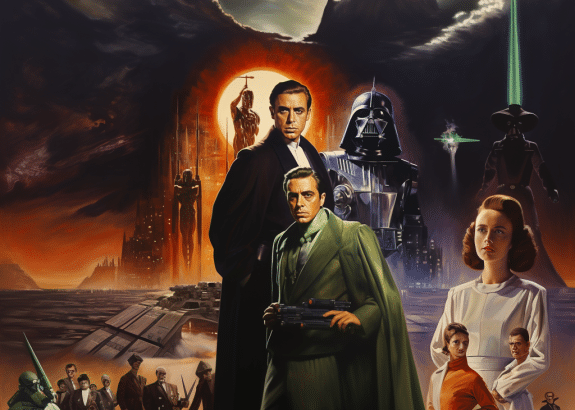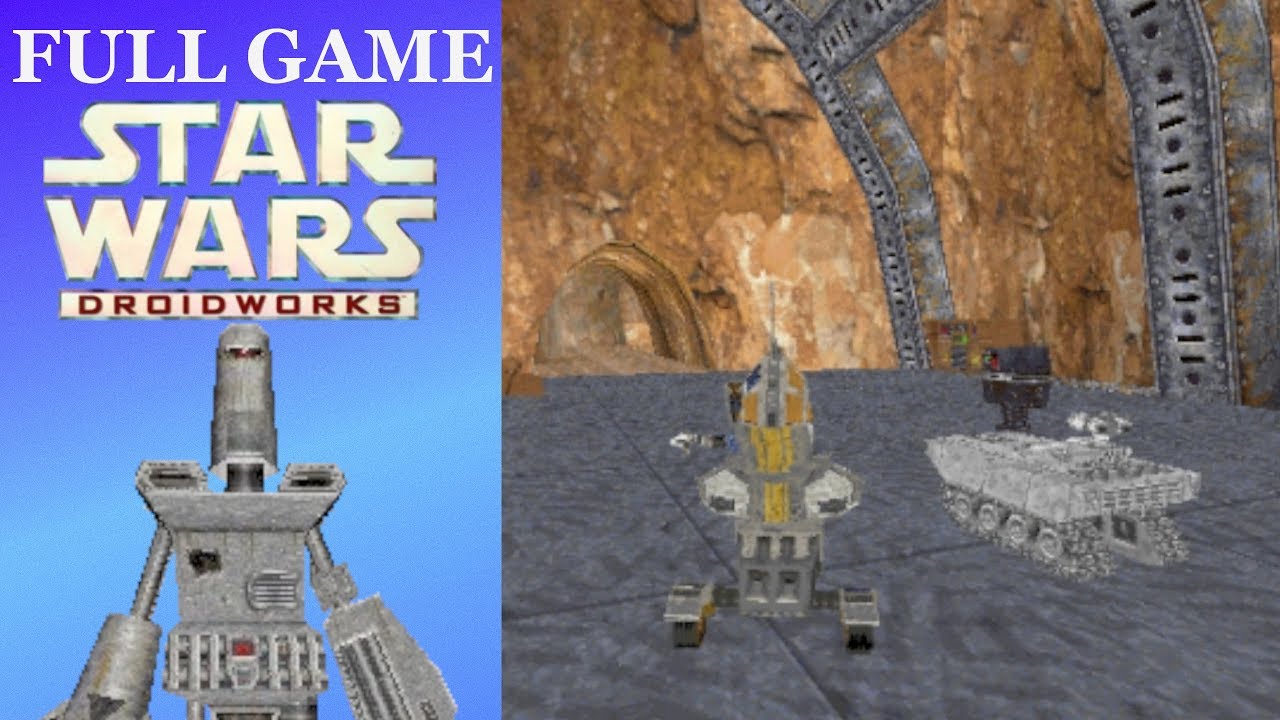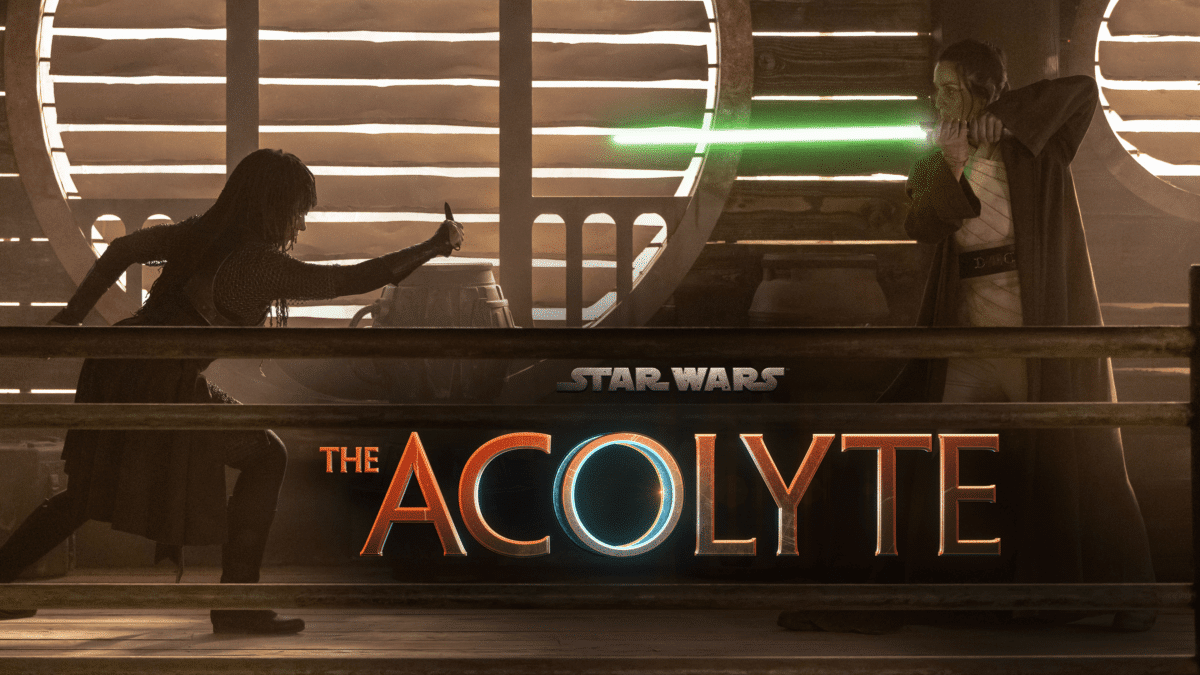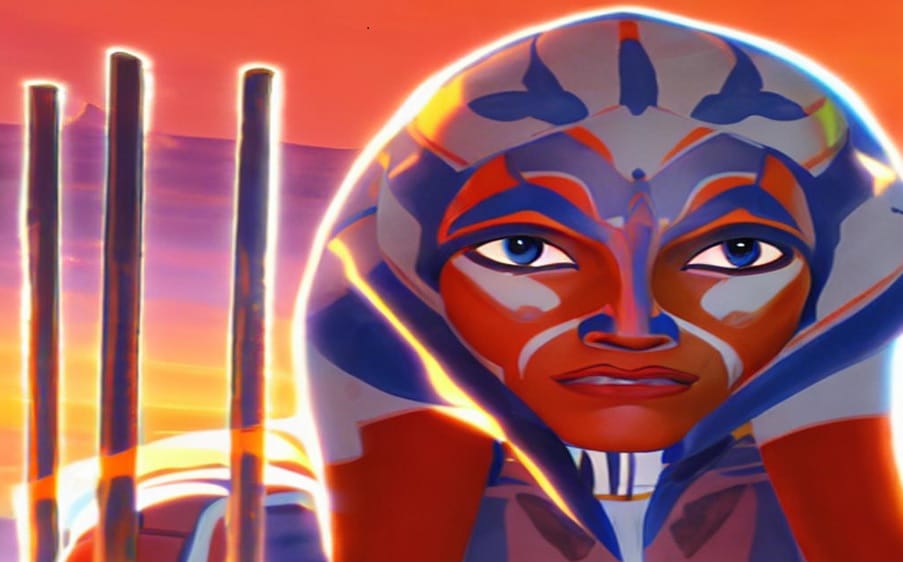In the vast tapestry of cinema, where historical biopics and space operas seldom intersect, a fascinating link has emerged between the story of Robert Oppenheimer and the Star Wars universe. This connection, as intricate as the threads of the Force, weaves a tale that binds the atomic bomb’s creator with the galaxy’s deadliest weapon: the Death Star.
From Manhattan to the Death Star: The Atomic Link
Christopher Nolan’s latest cinematic endeavor, Oppenheimer, delves deep into the life of the physicist behind the Manhattan Project and his subsequent fall from grace. This narrative, surprisingly, resonates with the plot of Rogue One, the first spin-off from the Star Wars saga, released in 2016.
Rogue One chronicles the Rebel Alliance’s quest to obtain the Death Star blueprints, pivotal for Luke Skywalker’s eventual destruction of the space station in Episode IV. While the parallels between the Death Star and the atomic bomb might seem evident, the ties with Oppenheimer run deeper, thanks to the intricacies of Rogue One.
Destroyer of Worlds: The Shared Vision
John Knoll, a special effects maestro with over two decades of Star Wars experience under his belt, pitched a story titled Destroyer of Worlds. This title mirrors the haunting words of Robert Oppenheimer, drawn from the sacred Hindu scripture, the Bhagavad-gītā, reflecting his profound remorse over the atomic bomb’s creation. Nolan’s film echoes this sentiment, emphasizing the weight of Oppenheimer’s guilt.
Galen Erso & Oppenheimer: Scientists with Regrets
In Rogue One, Jyn Erso, portrayed by Felicity Jones, embarks on a mission to retrieve the Death Star blueprints. The plot thickens when it’s revealed that her father, Galen Erso (played by Mads Mikkelsen), is the mind behind the Death Star. Like Oppenheimer, Galen was a visionary, researching energy sources, specifically the kyber crystals, which power lightsabers and other formidable weapons in the Star Wars universe.
Galen’s ambition to harness the power of larger kyber crystals was exploited by the Empire, culminating in the creation of the planet-destroying Death Star. Realizing the catastrophic potential of his invention, Galen, much like Oppenheimer, grappled with remorse. In a bid to thwart the Empire’s plans, he sabotaged his creation, embedding a covert flaw that Luke Skywalker would later exploit.
Mikkelsen, in interviews, has acknowledged that his character drew inspiration from eminent scientists, including Oppenheimer, further solidifying the bond between the physicist and the Star Wars narrative.
Hidden Ties: Code Names & Shared Histories
Another intriguing connection lies in the early stages of Rogue One‘s production. Major films often employ code names to maintain secrecy, and for Rogue One, the chosen moniker was “Los Alamos” – the very laboratory where Oppenheimer helmed the Manhattan Project.
Adding another layer to this intricate web, Rogue One‘s director, Gareth Edwards, previously worked on a BBC documentary about Hiroshima, one of the cities devastated by Oppenheimer’s creation.
Conclusion: An Atomic Legacy in the Stars
While Star Wars and the atomic bomb might seem worlds apart, their stories converge in Rogue One, intertwining the legacies of Robert Oppenheimer and the Death Star. This unexpected connection serves as a poignant reminder of the profound impact of cinema, bridging historical events with fictional tales, and highlighting the shared human experiences of ambition, remorse, and redemption.
FAQ: Oppenheimer & Star Wars Connection
1. What is the main connection between Oppenheimer and Star Wars?
- The connection primarily revolves around the Rogue One storyline, which mirrors Robert Oppenheimer’s remorse over creating the atomic bomb, akin to Galen Erso’s regret over the Death Star.
2. Who is Robert Oppenheimer?
- Robert Oppenheimer was a physicist known as the “father of the atomic bomb” due to his role in the Manhattan Project, which led to the creation of the first atomic bomb.
3. How does the title Destroyer of Worlds relate to Oppenheimer?
- “Destroyer of Worlds” is a phrase from the Bhagavad-gītā, famously quoted by Oppenheimer to express his deep remorse after the atomic bomb’s creation. This title was also pitched for the Rogue One storyline.
4. Who is Galen Erso in the Star Wars universe?
- Galen Erso, portrayed by Mads Mikkelsen in Rogue One, is the scientist responsible for the creation of the Death Star. He’s also the father of the film’s protagonist, Jyn Erso.
5. How does Galen Erso’s character relate to Oppenheimer?
- Both Galen and Oppenheimer were scientists who grappled with guilt over their creations’ destructive capabilities. Galen’s remorse over the Death Star parallels Oppenheimer’s feelings about the atomic bomb.
6. What’s the significance of the code name “Los Alamos” for Rogue One?
- “Los Alamos” was the laboratory where Oppenheimer directed the Manhattan Project. This name was used as a code for Rogue One during its early production stages.
7. Did the director of Rogue One have any previous connection to Oppenheimer’s story?
- Yes, Gareth Edwards, the director of Rogue One, worked on a BBC documentary about Hiroshima, a city devastated by the atomic bomb, further linking the film to Oppenheimer’s legacy.
8. Is the connection between Oppenheimer and Star Wars purely fictional?
- While Star Wars is a fictional universe, the themes and character arcs in Rogue One draw clear inspiration from real-life events and figures, notably Oppenheimer’s life and the atomic bomb’s creation.







